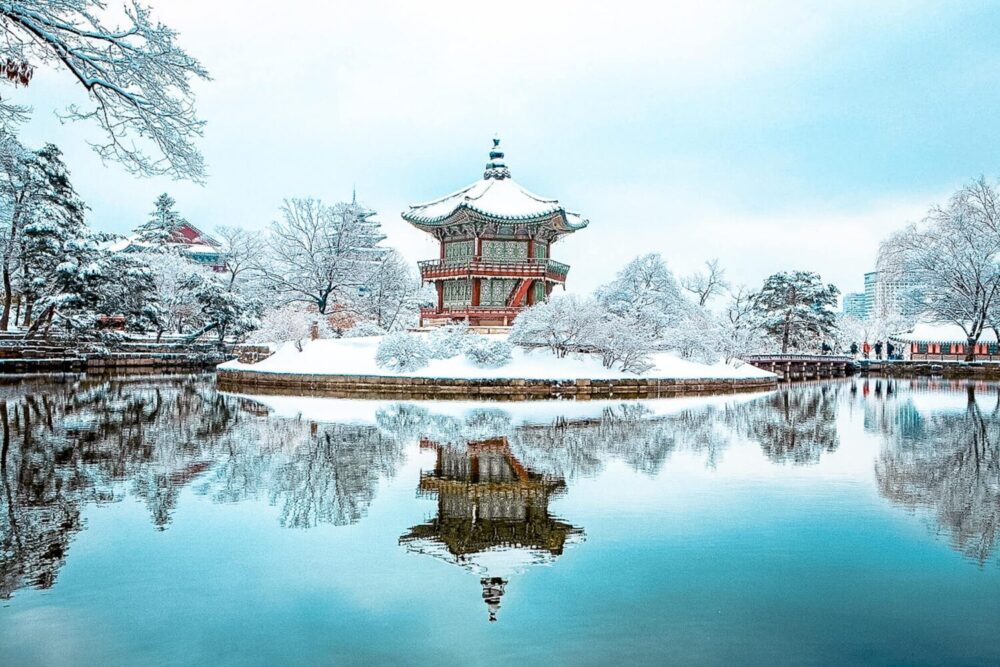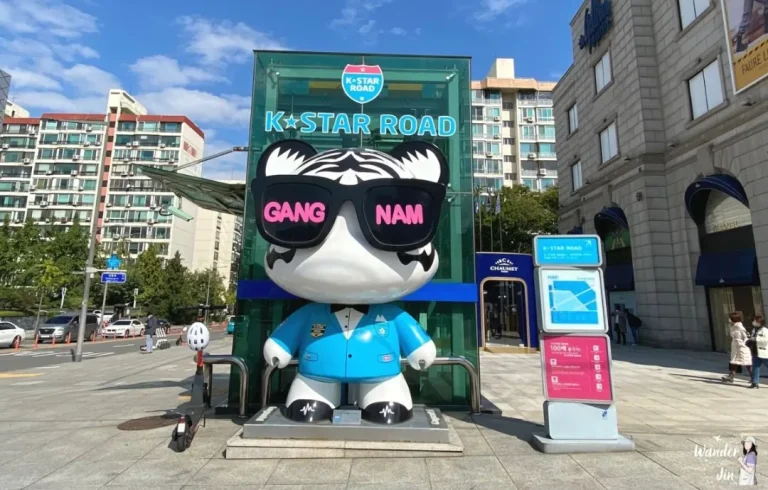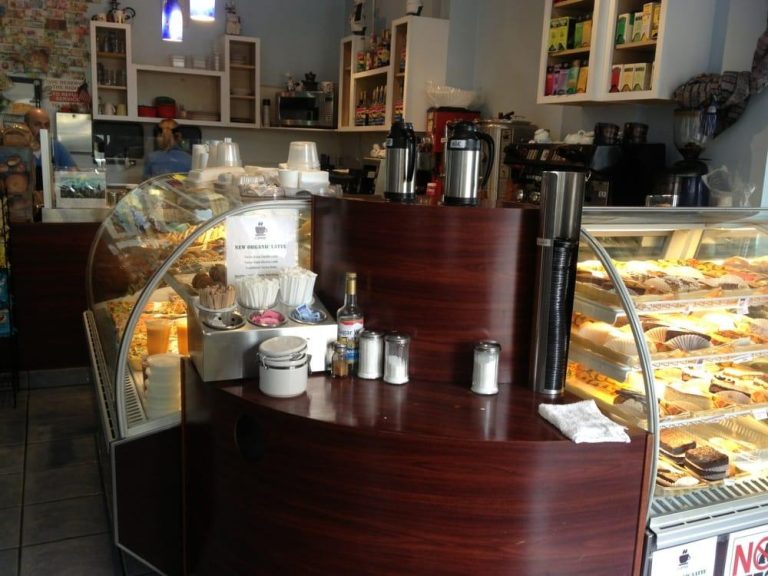When the temperatures drop and snow blankets the mountains and palaces, Korean winter transforms the country into a magical wonderland. Stretching from late November to early March, winter in South Korea is a season of crisp air, dazzling lights, winter sports, festive celebrations, and warming traditional foods.
Whether you’re a snow lover, a cultural explorer, or someone seeking new adventures, experiencing a Korean winter offers unforgettable memories. In this guide, we’ll dive into what makes Korean winter special, the best things to do, what to wear, and how to plan your trip.
When Is Winter in South Korea?
South Korea’s winter typically runs from late November to early March.
| Month | Average Temperatures (Seoul) |
| November | 3°C to 10°C |
| December | -6°C to 3°C |
| January | -8°C to 1°C |
| February | -6°C to 5°C |
| March | 0°C to 10°C |
Tip: January is the coldest month, often seeing temperatures drop below freezing, especially at night.
What Makes Korean Winter Unique?
South Korea’s winter is distinct for several reasons:
- Dry, crisp air: Unlike humid winters elsewhere, Korean winters are typically dry and brisk.
- Snowy landscapes: Especially in mountain regions like Gangwon-do and around Seoul.
- Vibrant festivals: Winter light shows, ice fishing, and snow festivals create festive energy everywhere.
- Hearty cuisine: Comfort foods like tteokguk (rice cake soup) and hotteok (sweet pancakes) are winter favorites.
- Winter sports culture: Skiing and snowboarding are incredibly popular, with world-class resorts easily accessible from major cities.
Best Places to Experience Korean Winter
Here’s where you can make the most of the season:
Seoul
- Winter Illumination: Walk along Cheonggyecheon Stream decorated with stunning light displays.
- Palaces in the Snow: Visit Gyeongbokgung and Changdeokgung Palaces dusted with snow — pure magic!
- Ice Skating Rinks: Popular spots include Seoul Plaza Ice Rink and Lotte World’s indoor rink.
Gangwon-do Province
This region gets the heaviest snowfall and offers the best winter sports:
- Yongpyong Resort: One of Korea’s largest and a former Winter Olympics venue.
- Alpensia Resort: Great for beginners and intermediate skiers.
- Snow Festivals: Don’t miss the Hwacheon Sancheoneo Ice Festival, where you can try ice fishing.
Nami Island
Just an hour from Seoul, Nami Island turns into a winter wonderland:
- Famous for its lined tree paths coated in fresh snow.
- Romantic boat rides and snowy photo ops everywhere.
Jeju Island
Although known for beaches, Jeju’s winter landscapes are stunning:
- Hallasan Mountain offers snowy hiking trails.
- Camellia Hill blooms even in winter, creating a stunning contrast of snow and flowers.
Must-Try Korean Winter Foods
Warming up is half the fun during Korean winter! Here are dishes you must taste:
| Food | Why You Should Try It |
| Tteokguk (Rice Cake Soup) | Traditionally eaten on Lunar New Year |
| Samgyetang (Ginseng Chicken Soup) | Boosts warmth and immunity |
| Hotteok (Sweet Pancake) | Street food favorite, filled with brown sugar and nuts |
| Bungeoppang (Fish-shaped Pastry) | Filled with red bean paste; a sweet winter snack |
| Odeng (Fish Cake Skewers) | Served in hot broth, perfect for cold days |
| Korean BBQ | Grilling meat indoors during winter is a cozy, delicious experience |
Tip: Visit traditional markets like Gwangjang Market in Seoul for the most authentic flavors!
Korean Winter Festivals to Experience
Korea’s winter festivals are vibrant, colorful, and full of local charm:
Hwacheon Sancheoneo Ice Festival
Held every January in Gangwon-do, this festival involves:
- Ice fishing for mountain trout
- Ice sledding
- Huge ice sculptures
Fun fact: You can even catch trout with your bare hands!
Taebaeksan Snow Festival
Located in Taebaek City, this festival showcases:
- Massive, intricate snow and ice sculptures
- Nighttime light shows
- Snow hiking and activities
Seoul Lantern Festival (Winter Edition)
Cheonggyecheon Stream is lit up with spectacular lanterns featuring winter and traditional Korean themes.
What to Pack for a Korean Winter
Prepare for very cold (and sometimes windy) conditions:
| Essential Item | Reason |
| Thick winter coat | Protection against subzero temps |
| Thermal inner layers | Essential for layering |
| Wool scarves, gloves, hats | Retain body heat |
| Moisturizer and lip balm | Combat dry, cold air |
| Waterproof boots | Especially useful if hiking or snow touring |
Bonus: Hand warmers are sold everywhere in Korea during winter — grab a few for your pockets!
Popular Winter Activities
Korean winter isn’t just about sightseeing — it’s about playing in the snow too:
- Skiing and snowboarding at resorts like Yongpyong and Vivaldi Park.
- Ice skating outdoors in Seoul Plaza.
- Ice fishing at winter festivals.
- Hiking snowy trails at Hallasan (Jeju) or Bukhansan (Seoul).
- Hot spring spas — many Koreans enjoy visiting a jjimjilbang (Korean sauna) in winter!
Why Korean Winter Is a Must-Experience Season
| Reason | Why It’s Special |
| Less crowded tourist sites | Enjoy popular spots without massive crowds |
| Lower travel costs | Flights and accommodations are often cheaper |
| Magical scenery | Snow-dusted palaces and mountains are breathtaking |
| Unique cultural experiences | Winter-only festivals and foods |
Conclusion
A Korean winter offers so much more than just chilly weather — it’s a season full of magic, excitement, and warmth. From skiing on snowy mountains and visiting illuminated places to eating comforting street food and celebrating winter festivals, every moment feels special.
Whether you’re chasing your first snowfall, looking for thrilling winter sports, or simply wanting to sip a hot bowl of tteokguk while watching the snowfall outside, South Korea in winter is an experience you’ll never forget.
FAQs
1. When is winter in Korea?
Winter in South Korea typically runs from late November to early March, with January being the coldest month.
2. Where can I see snow in Korea?
Snow is common in Seoul, Gangwon-do Province (Yongpyong Resort), and mountainous regions like Hallasan in Jeju.
3. What are must-try foods during Korean winter?
You must try dishes like tteokguk, hotteok, samgyetang, odeng, and bungeoppang — perfect for warming up!
4. Is South Korea good for skiing and snowboarding?
Absolutely! Korea has world-class ski resorts like Yongpyong, Vivaldi Park, and Alpensia, with facilities for all levels.
5. What should I pack for Korean winter travel?
Pack thermal clothing, a thick winter coat, scarves, gloves, hats, moisturizer, lip balm, and waterproof boots.




Leave a Comment